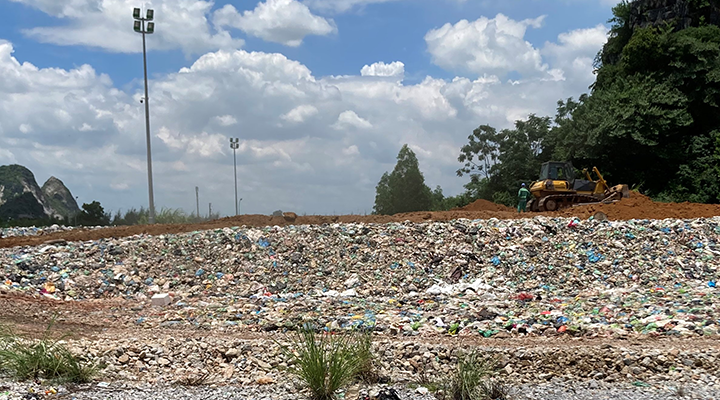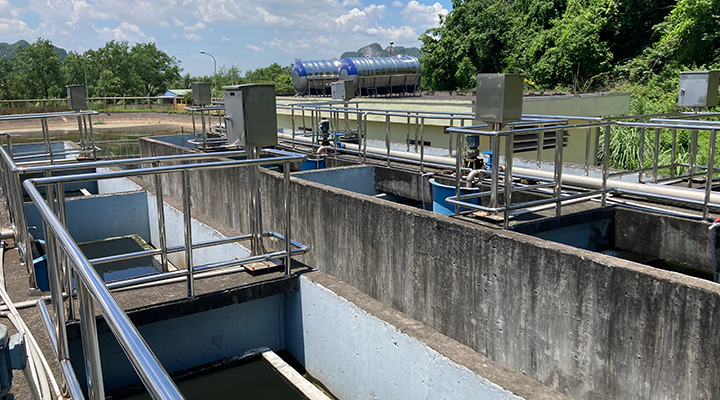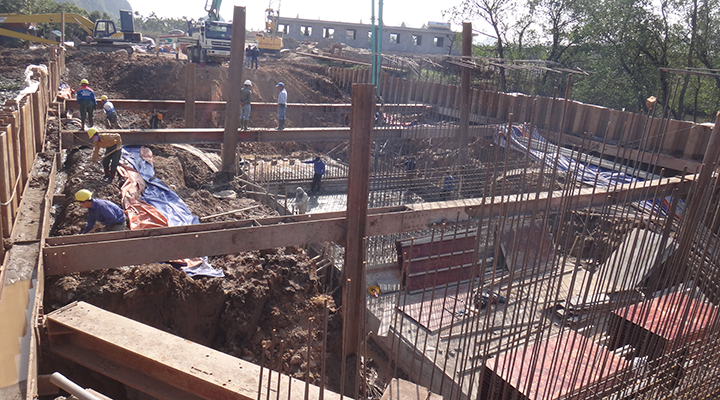
Vietnam's first sanitary waste disposal site using Japanese technology
Menu

Vietnam's first sanitary waste disposal site using Japanese technology
Haiphong City, the target of the project, is the second largest city in the northern area of Vietnam after Hanoi, the capital, with a population of over 1.8 million (as of 2012). At the time, the rapid urbanization and population growth associated with economic growth in Haiphong City resulted in the generation of a large amount of waste, and the deterioration of the living environment became apparent. In particular, the existing landfill sites were already full, and as they did not have proper landfill management, there were many bad offensive odors and harmful insects such as flies. Haiphong therefore decided to carry out this project using Japanese ODA loan.
The project mainly involved (i) the construction of a landfill site for municipal waste, (ii) the construction of an access road and (iii) the procurement of waste collection vehicles and other equipment. This has resulted in a marked improvement in the living environment in Haiphong City through the rapid collection and proper landfill disposal of the large amount of waste generated. In this project, YEC provided consulting services to the client, Hai Phong People’s Committee, including detailed design of facilities, bidding assistance & technical evaluation, and construction supervision.

disposal site

Overall photo of the newly constructed landfill (sewage treatment facility in front of the rocky mountain, garbage landfill area in the back)
The main landfill site for this project is the first landfill site in Vietnam that is sufficiently sanitary by world standards. Furthermore, YEC have chosen to apply a technology developed in Japan to this landfill site namely the Semi-aerobic landfill site (Fukuoka method)※1. This technology was expected to reduce greenhouse gas emissions from the landfill site and improve the quality of the leachate generated by the landfill site.
Landfill sites are essential facility for people's lives, but they are often regarded as so-called 'nuisance facilities' and people do not want them built near their homes. This situation is the same in Haiphong City as well. The landfill site was constructed in a wetland area along a large river, which is almost uninhabited. Because it was a wetland, the ground was loose and there was a risk of land settlement. YEC therefore proposed large-scale 'ground improvement work' throughout the landfill site and carried out the detailed design of the work.
YEC were involved in this project from 2011 until 2021, when the work was completed, a period of more than ten years. During this period, engineers from various fields, including civil engineering, construction, waste management, water treatment, electrical and mechanical, joined forces to carry out detailed design, bidding assistance & technical evaluation, and construction supervision. In particular, during the construction YEC supervision supervised the local Vietnamese contractor to bring the work to completion. The landfill site and waste collection vehicles of this project are now being utilized by Haiphong City and are making a significant contribution to improving the living environment of Haiphong citizens.
※1 Semi-aerobic landfill site (Fukuoka method):Technology that can reduce the environmental impact of sewage and greenhouse gases generated by landfills by improving air permeability inside landfills and encouraging the decomposition of organic matter, such as food waste.
*Information as of October 2023.

Leachate treatment area: Equipment for mixing and stirring chemicals and wastewater

Construction of a bridge leading to a leachate treatment area that temporarily changed the flow of the river